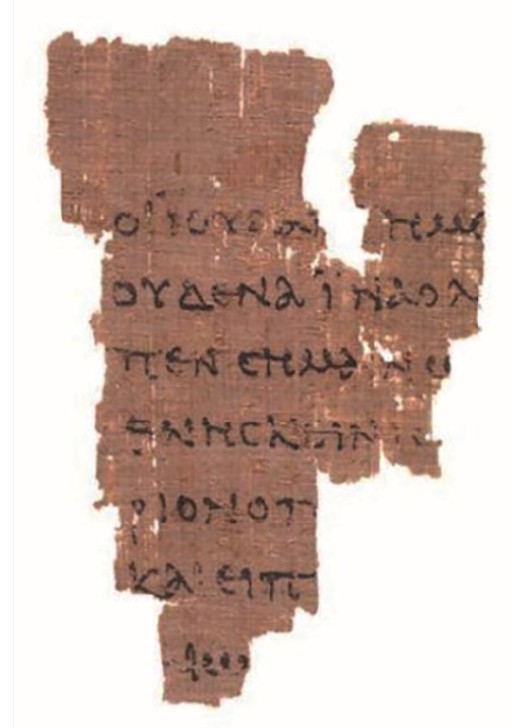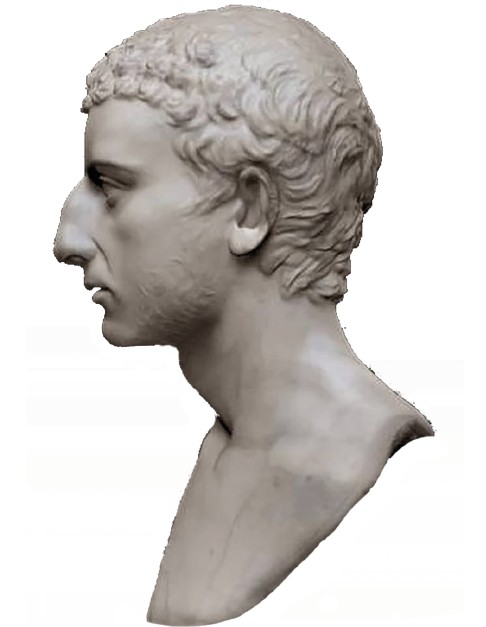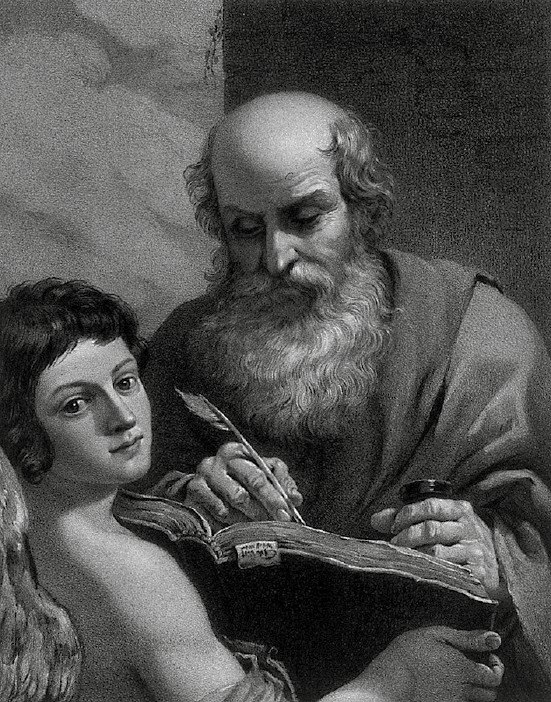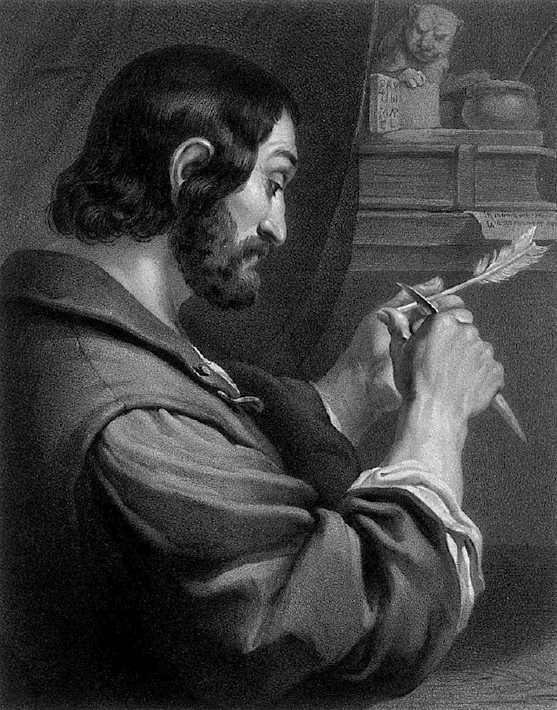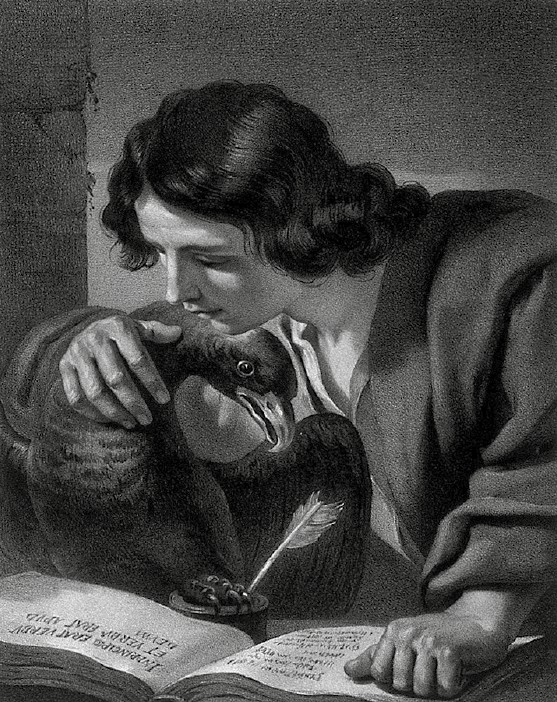The Bible is divided into two parts, the Old Testament and the New Testament. This article is focused on the New Testament, which commences with the record of Jesus Christ’s ministry on earth, in the four Gospel records.
Each Gospel is named after its writer: Matthew, Mark, Luke and John. They each give their own account of Jesus in their own way. It is not always clear how we know who did the writing, but they do give clues. it is clear that all four have their own style and each represents Jesus in a different way, so that we can build a complete picture of his ministry. This picture is consistent with what was written beforehand in the Old Testament, and what was written afterwards in the rest of the New Testament.
There are in excess of 5,000 ancient New Testament manuscripts, ranging from fragments to copies of whole books. We can be certain that the text we have is at least 95% genuine. There is more evidence for the writing of the New Testament than for the complete works of Shakespeare—which, of course, were written much nearer to our own time.
True Accounts
Are the Gospel records true and auth-oritative? We have not only the testimony of the Bible itself, but scholars agree:
“About the end of the second century the Gospels were reverenced as sacred books by a community dispersed over the whole world, composed of men of different nations and languages.”
(A Guide To The Gospels by WG Scroggie D.D.)
The following accounts of the writing of the Gospels are by two Second Century scholars:
“Those that contained the gen-ealogies (Matthew and Luke) were first written; it is understood that Mark wrote his Gospel from matter preached by Peter; and that John last of all… wrote a spiritual Gospel.”
(Clement of Alexandria)
Matthew issued a written Gospel among the Hebrews in their own dialect, while Peter and Paul were preaching in Rome and laying the foundation for the Church. After their departure, Mark, the disciple and interpreter of Peter, did also hand down to us in writing what had been preached by Peter. Luke also, a companion of Paul, recorded in a book the Gospel preached by him. Afterwards, John, the disciple of the Lord, who also had leaned upon his breast, did himself publish a Gospel during his residence in Ephesus in Asia.”
(Irenaeus of Lyon)
From the Gospels themselves we get the picture of the Lord Jesus, the circumstances in which he worked, and the audience for which they were intended. Each Gospel writer was one of the first disciples who laid the foundations of the Christian community, and each presents an eyewitness account in his own way.
The Jesus of History
“At this time [33 ad] there was a wise man called Jesus, and his conduct was good, and he was known to be virtuous. Many people amongst the Jews and other nations became his disciples. Pilate condemned him to be crucified and to die. But those who became his disciples did not abandon his discipleship. They reported that he had appeared to them three days after his crucifixion and that he was alive. Accordingly he was perhaps the Messiah, concerning whom the prophets have reported wonders. And the tribe of the Christians, so named after him, has not disappeared to this day.”
(Josephus, the Essential Works by Paul L. Maier, 1988)
(Flavius Josephus was a historian who lived in the First Century AD.)
It is important to note that people were writing and making records of what happened with regard to Jesus, and the Gospel records can be verified through that background.
The Gospels were written soon after the events they describe, when eyewitnesses would have been available to challenge inaccuracies.
Those who know the Bible would ack-nowledge that although Matthew, Mark, Luke and John were willing authors they have been helped by God, through His power, the Holy Spirit. This has ensured the accuracy of their statements and also that the Gospel records tie in with all that has been written in the Old Testament and indeed the rest of the New Testament.
As Jesus himself said, ‘These things I have spoken to you while I am still with you. But the Helper, the Holy Spirit, whom the Father will send in my name, he will teach you all things and bring to your remembrance all that I have said to you’ (John 14:25–26).
The Living Lord in the Gospels
Let’s look at how the Lord Jesus is presented with a different emphasis in each of the Gospel records.
Matthew
(surnamed Levi). He was a converted tax collector, one of the disciples of Jesus. He rep-resents Jesus as the King of the Jews, the Messiah (Mark 2:14, Luke 5:27).
The Lord Jesus is the one who is to be the King of Israel in the future Kingdom of Heaven. In his Gospel we have the geneal-ogy of Joseph, the adoptive father of Jesus. We see Jesus’ baptism, messages, and miracles. He is the one who has conquered sin and death, and as a consequence he has been raised from the dead and his return is confidently expected.
Mark
(also known as John Mark). There is no definite reference to the author in the Gospel itself. In the rest of the New Testament there are references to him (for example Acts 12:12, 25).
A key verse in Mark’s present-ation of the Lord Jesus is, ‘The Son of Man came not to be served but to serve, and to give his life as a ransom for many’ (Mark 10:45). Frequent use of the words ‘immediately’ and ‘straightaway’ indicate Jesus’ dynamism.
Jesus ministered to the needs of others by preaching, teaching, healing and ultimately giving his life. After his death and resurrection he commissioned others to follow in his steps, with his authority.
Luke
is called ‘the be-loved physician’ (Colossians 4:14). He portrays Jesus as the Son of man. It is well worth noting the way in which he introduces himself to the readers of his Gospel: ‘Inasmuch as many have undertaken to compile a narrative of the things that have been accomplished among us, just as those who from the beginning were eyewitnesses and ministers of the word have delivered them to us, it seemed good to me also, having followed all things closely for some time past, to write an orderly account for you, most excellent Theophilus, that you may have certainty concerning the things you have been taught’ (Luke 1:1–4). ‘Theophilus’ means “Lover of God”.
Luke takes a great deal of trouble to show us the compassionate Saviour in his historical context, with careful reference to the Old Testament. From the Lord’s birth through to his death and resurrection, Luke demonstrates that ‘the Son of Man came to seek and to save the lost’ (Luke 19:10).
Luke was also the author of the Acts of the Apostles. There he is often to be found together with the Apostle Paul, as can be seen from the passages where the narrative slips into the first person (for example Acts 27:1). Paul mentions him a number of times in his letters (for example 2 Timothy 4:11).
John
is described as a ‘son of thunder’ (Mark 3:17), and also ‘the disciple whom Jesus loved’ (John 21:20). He, along with Peter, was a fisherman. Whilst Luke pre-sents us with a picture of the Son of man, emphasising his humanity, John presents Jesus as the Son of God. This is how John presents his purpose to us:
Now Jesus did many other signs in the presence of the disciples, which are not written in this book; but these are written so that you may believe that Jesus is the Christ, the Son of God, and that by believing you may have life in his name (John 20:30–31).
John’s Gospel is renowned for this statement: ‘God so loved the world, that he gave his only Son, that whoever believes in him should not perish but have eternal life’ (John 3:16).
John was not only a Gospel writer but also he wrote three letters which are preserved in the New Testament. At Jesus’ command he also wrote the book of Revelation.
Unified Message
Each of the Gospel records provides its own unique witness to the ministry of Jesus, and yet it clearly is the same Jesus throughout them all. They present the Serving Messiah, the Son of man and Son of God, who died for us on the cross and then, the third day, rose bodily from the dead and is alive for evermore.
He ascended to heaven and left on record a command and two great promises:
All authority in heaven and on earth has been given to me. Go therefore and make disciples of all nations, baptizing them in the name of the Father and of the Son and of the Holy Spirit, teaching them to observe all that I have commanded you. And behold, I am with you always, to the end of the age (Matthew 28: 18–20).
When the Lord Jesus was taken up to heaven, after he had been raised from the dead, angels said to his watching disciples, ‘Men of Galilee, why do you stand looking into heaven? This Jesus, who was taken up from you into heaven, will come in the same way as you saw him go into heaven’ (Acts 1:11).
The Gospel writers present eyewitness accounts of the ministry of the Lord Jesus Christ. The most important event of all time so far, is the resurrection of Jesus from the dead. He is now alive for ever. That, ultimately, is the witness that all those who knew him give us through the Gospel records. It is the same message that runs through the rest of the Bible.
Jesus, as a Jew, would be fully instructed in the Old Testament. Much of his teaching and his life is a fulfilment of promises and prophecies made in the Old Testament.
There is one other reason why we can be absolutely sure of these accounts of the life of the Lord Jesus. They are God-given records, and what the early believers wrote about Jesus is what God intended us to have. As Paul wrote to Timothy:
All Scripture is breathed out by God and profitable for teaching, for reproof, for correction, and for training in right-eousness, that the man of God may be complete, equipped for every good work (2 Timothy 3: 16–17).
The whole focus of history is upon another great event—more important even than Christ’s resurrection, but actually a consequence of it. He will return. We have seen that promised (Acts 1:11). There is no question of it. He will come at a time of world chaos and warfare, at a time when the people of Israel, though in their own land, will be in dire distress, apparently on the brink of total destruction as a nation (Zechariah 12–14) Jesus will return to Jerusalem and usher in a period of judgement to restore order to the world and ultimately a new age of peace throughout the whole earth (Isaiah 2).
The times of ignorance God overlooked, but now he commands all people everywhere to repent, because he has fixed a day on which he will judge the world in righteousness by a man whom he has appointed; and of this he has given assurance to all by raising him from the dead (Acts 17:30–31).
What of You and Me?
So however unlikely it may seem to you right now—there is a real possibility that soon you will meet Jesus Christ face to face.
For we must all appear before the judgment seat of Christ, so that each one may receive what is due for what he has done in the body, whether good or evil (2 Corinthians 5:10).
What a prospect! Happily for us, God has shown us His love in giving Jesus to die for our sins, and through our belief and God’s grace we have the prospect of everlasting life in the Kingdom of God which Jesus Christ will establish at his coming. This was also the hope of those who first met Jesus long ago:
Now that you have been set free from sin and have become slaves of God, the fruit you get leads to sanctification and its end, eternal life. For the wages of sin is death, but the free gift of God is eternal life in Christ Jesus our Lord (Romans 6:22–23).
David Nightingale

